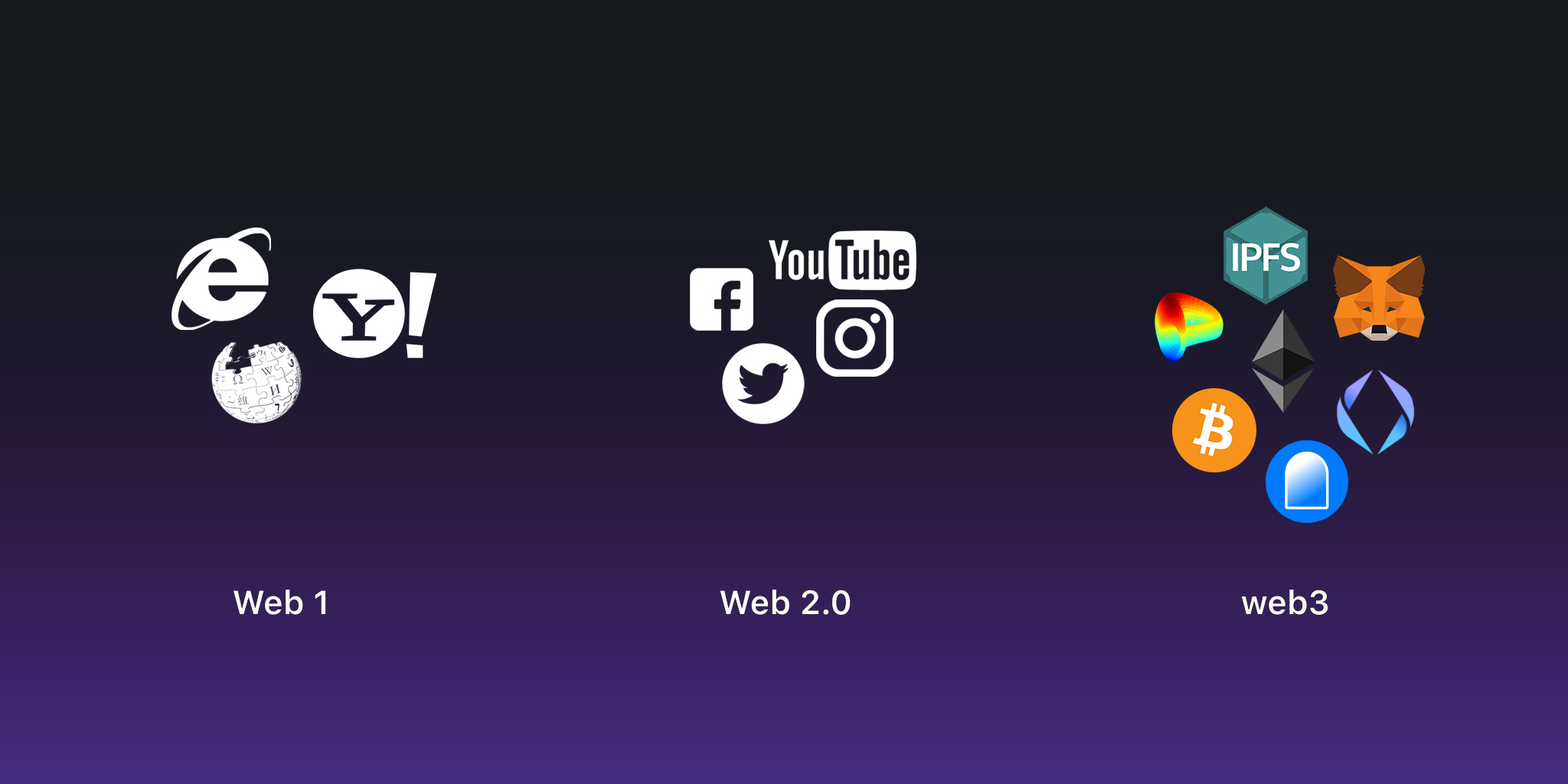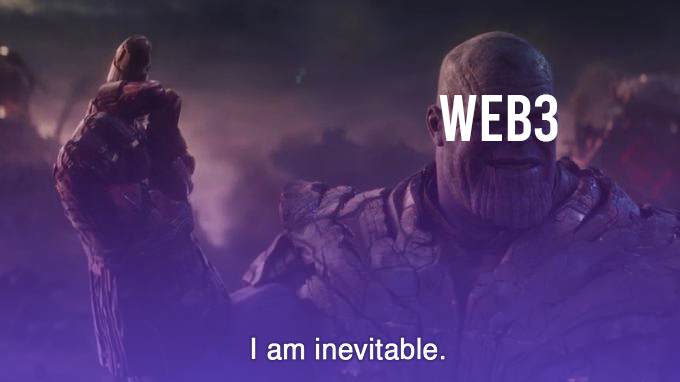The Web Trilogy
Since the dawn of internet in 1990’s, the web as we know it has been through 3 different phases. We’re gonna dive into each phase, define them, define how they were different from the phase before and then dedicate the rest of the article to web3 and the future of the web and see why it’s important for us to learn and educate ourselves about it.

Web1: The very first phase of internet ~ a centralized “read-only” library where the masses were only able to read from the select few. This web was purely informational meaning that users had no chance of interacting with the platforms that they were using which positioned the power in the hands of said platforms therefore making it a truly one-sided web. As time passed users realized that web1 can not be the functional web as there is no discussion and no interaction.
Web2: The second phase of internet slowly took over our lives as dominant internet gradually transitioned from the “read-only” phase to “read and write” phase. Despite staying centralized, web2 provided the users with the option to engage and get involved in what was happening on the web which resulted in the “social web”. The “social web” opened up the room for users to have an online presence by giving them the ability to talk, share and discuss; meanwhile web2 platforms started to get more and more powerful by controlling our most important form of presence on the web ~ our data. Most of these web2 powerful popular platforms are free, right? Not exactly! All free things come with a catch, in the case of these near-monopoly platforms, the free services provided to users come with the cost of their precious personal data which is far more valuable than any amount of capital; and that brings us to the on-going transition to web3.

Web3: The third phase of internet refers to the decentralized web, where our data is not controlled by any centralized server, entity or individual. Web3 comes with many improved perks such as:
- Privacy
- Transparency
- Virtual Ownership
- Digital Identity
A decentralized web provides us with greater privacy where you don’t have to provide no more than a decentralized wallet address to use web3 dApps and services. It provides us with more economical transparency on transactions with the help of blockchain technology. It embraces digital ownership of data and virtual on-chain assets with NFTs and most importantly it connects us as a whole and removes borders, barriers and censorship.
Wen Web3?
The transition to web3 won’t happen in a blink of an eye ~ in fact it’s been happening since decentralized internet (P2P data sharing) and cryptocurrencies (Bitcoin, c. 2009) came to life, but there isn’t an estimate on when and how it will happen; all we know is that it is inevitable. As humans we’re constantly trying to improve our living conditions from our lifestyle to the web that we use; We’re going to keep creating, expanding and growing for the better and who knows, we might read about web4 in a couple of years!

With that being said, web2 era will eventually come to an end and while every new app and creation is just a newer irritation of the same old same old ~ web3 can be a very exciting place for users and creators to come together in a new light to create and build in better and improved conditions.
How to get started in Web3?
As mentioned before in web3, unlike web2, the user holds all the data and not the other way around, so instead of having to give over all your personal information to utilize web3 apps ~ all you need is a decentralized wallet.
A decentralized wallet has 2 important parts:
- Private Key: A private key is used to access a wallet ~ by using your private key you can sign off on decentralized smart contracts to access different dApps, leave on-chain notes, participate in on-chain governance by decentralized voting and even publish your on-chain stored articles.
Do not ever share your private key as it holds your funds and your identity. - Public Address: Your public address is used as your web3 identity ~ by sharing your public address you can identify yourself, access dApps, receive payments, enter raffles and prove ownership of your on-chain assets.
There are a variety of wallet apps available, but as for Ethereum and Ethereum-based blockchains (EVM chains) ~ MetaMask is the most popular and utilized wallet out there. Create your own wallet by simply adding MetaMask to your browser to own your funds and digital identity.
It is true that web3 is not fully on a practical level yet, but it might very well change the way we live our lives in the coming decades ~ very similar to how each web phase and the internet as a whole have changed our lives! Hopefully this article gave you some idea on what web3 and web3 ethos looks like.